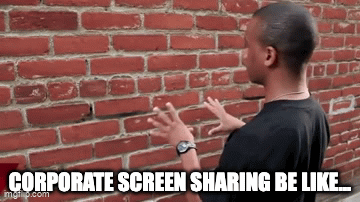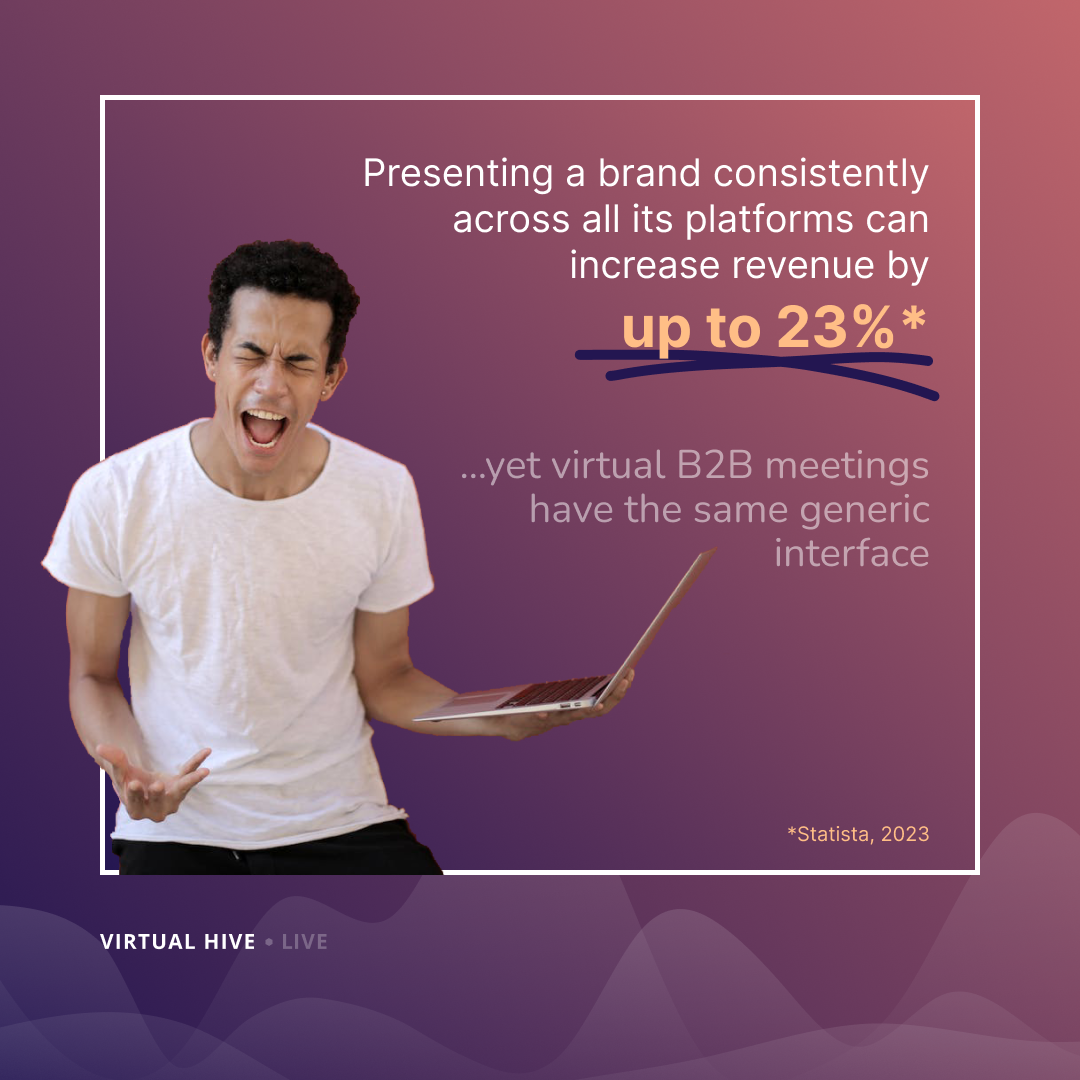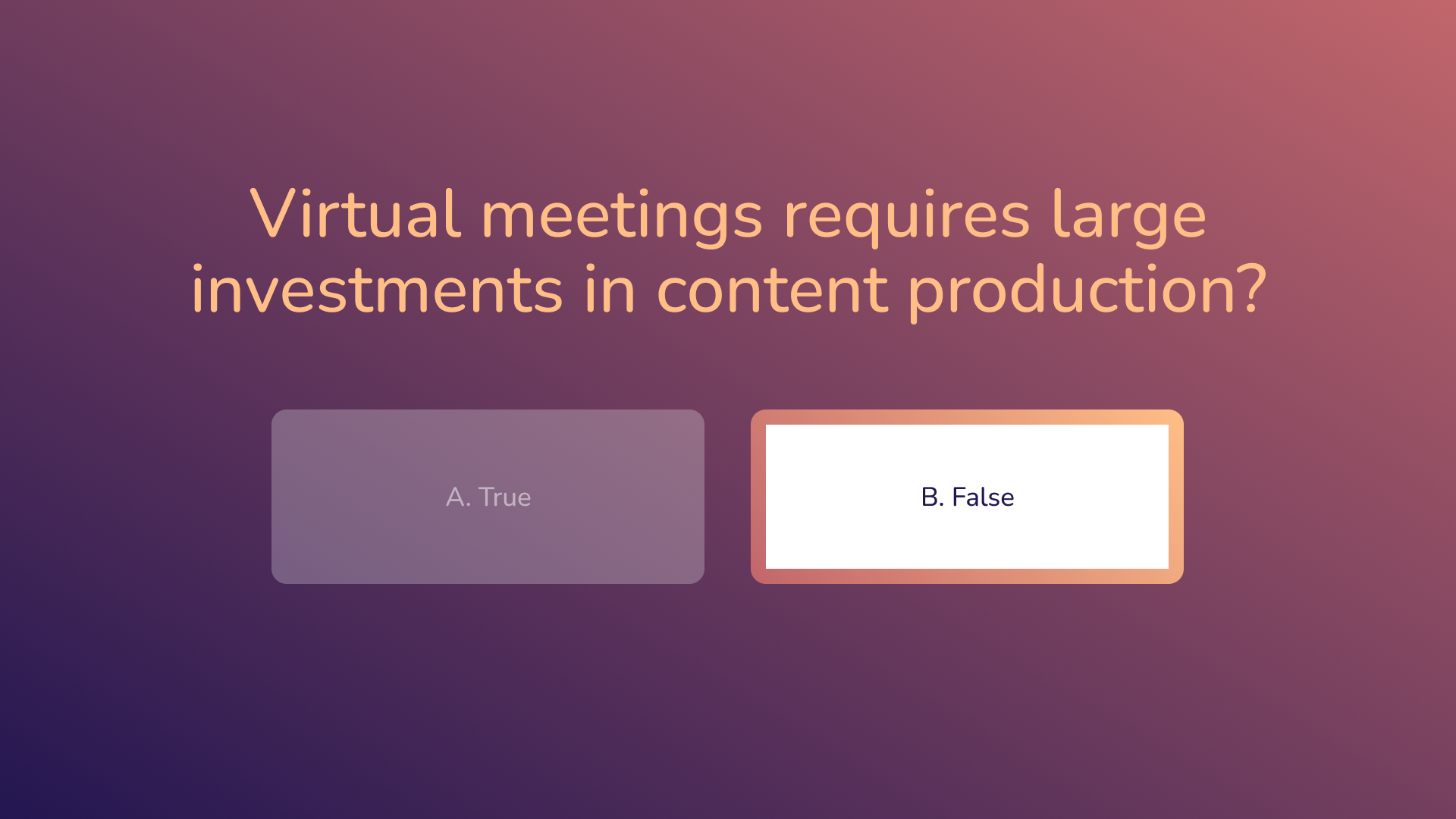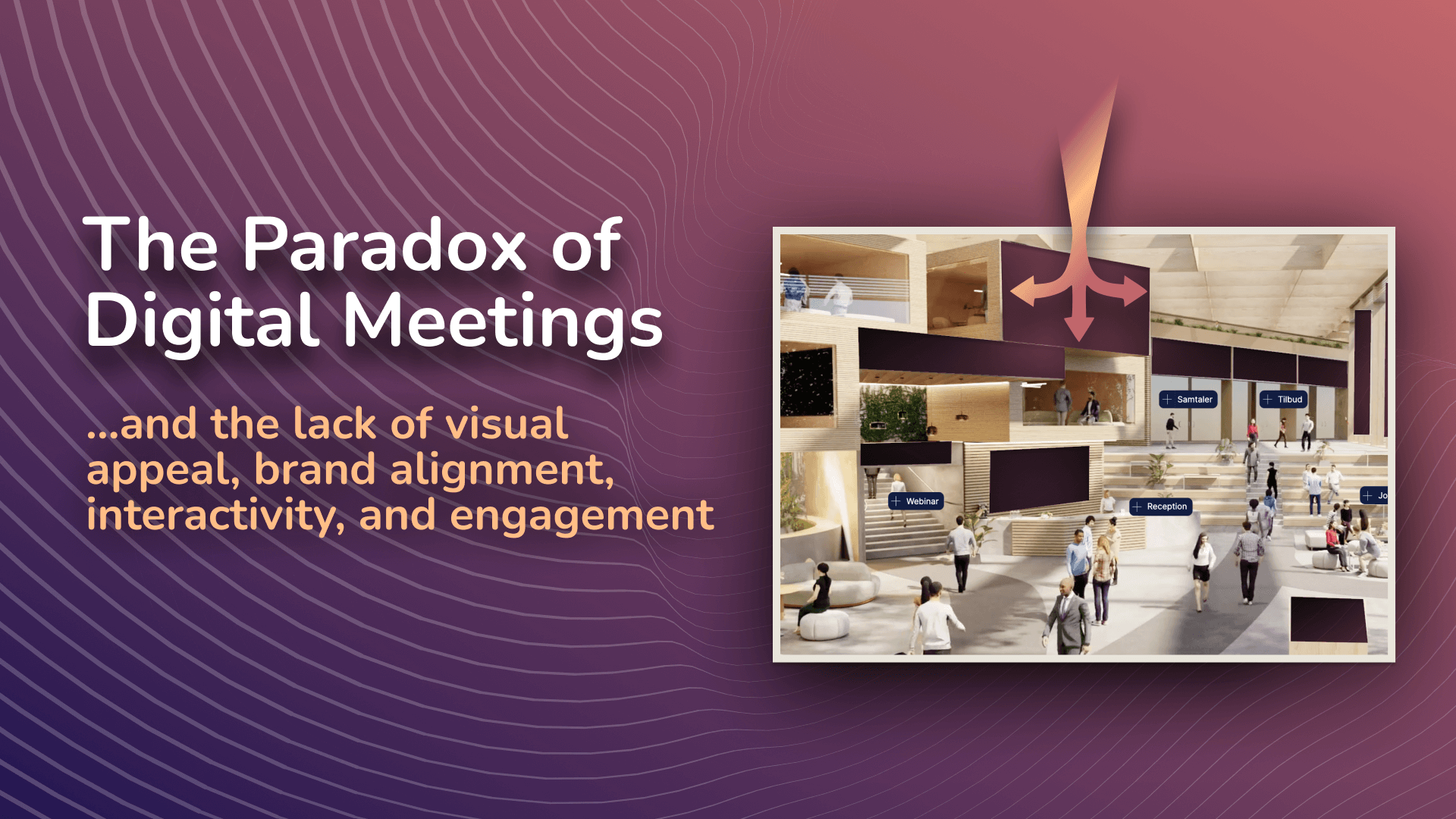The 8 Hidden Costs of Standard Screen Sharing

Background
The shift to virtual spaces for professional gatherings has led to a critical evaluation of the tools we use. While traditional screen sharing software has been the mainstay for many businesses, a closer look reveals significant gaps that can affect a company's bottom line and brand image. This exploration presents a data-driven perspective on the multifaceted advantages of advanced virtual meeting platforms.
1. The Branding Bottleneck
More Than Just a Virtual Background
- An estimated average revenue increase of 23% is attributed to always presenting the brand consistently (Mimeo Business, 2022).
- 72% of consumers feel loyalty to at least one brand, and consistent presentation can increase revenue (Inc.com, 2017).
- Consistent brands can be worth up to 20% more than those with inconsistent messaging (Funnel Amplified, 2021).

Standard screen sharing tools: They offer little more than a digital space. Companies using these tools are missing out on a critical component—branding. The limitations are evident; with a generic interface, your brand's story, ethos, and identity remain muted.
Advanced virtual platforms: They present an opportunity to create a unique, branded universe. Here, every webinar becomes an extension of your brand, leaving a lasting impression on participants. By not utilising such platforms, companies miss out on establishing brand recall and loyalty, which are invaluable in today's competitive market.
2. The Registration Riddle
First Impressions Count
- 88% of online consumers are less likely to return to a website after a bad experience (AWS).
- 30% of business use an event application for their virtual events. The main reason for using an event application is for session registration and an agenda overview (Markletic, 2023).
- 56% of consumers say they’ve abandoned an online service because of a login process that they’ve found too frustrating to complete (Ping Identity, 2021).
Standard tools: Often offer rudimentary registration processes that can be impersonal and tedious, reflecting poorly on the host organisation.
Sophisticated solutions: They can provide streamlined, professional sign-up experiences that save time and project credibility. By not upgrading, businesses lose out on setting a strong, positive first impression that can greatly influence participants' perception and engagement levels.
3. Action Over Words
The Power of Interactive CTAs
- 81.8% of virtual event organisers use event polling to improve interaction (Markletic, 2022).
- Personalised CTAs perform 202% better, suggesting a significant potential for increased engagement and conversion rates (Hubspot, 2023).
- CTAs within a video stream can, in some cases, achieve up to 380% more clicks than a normal sidebar call to action (Quicksprout, 2023).
Conventional tools: Are passive, requiring manual distribution of URLs and action points post-meeting, which can lead to lower engagement and conversion rates.
Next-gen platforms: Offer clickable CTAs within the webinar environment itself, providing immediate avenues for participants to connect, learn more, and take action. Companies not leveraging this feature are likely seeing fewer conversions and less effective call-to-action responses.
4. Measuring Success
Analytics and Impact Quantification
- 64% of event organisers use the feedback received from their sales team to determine attendee satisfaction (Markletic, 2022).
- 87% of consumers purchase products related to a brand's event after attending, confirming the marketing power of events (Inc.com).
- 45.7% of marketers say the primary goal of virtual events is to generate pipeline (Markletic, 2022).
Traditional screen sharing: Provides limited insights into attendee behaviour, leaving companies in the dark about the effectiveness of their events.
Cutting-edge platforms: Offer in-depth analytics and impact measurement tools. Without these, businesses miss out on understanding attendee behaviour, preferences, and the overall impact of their events, thereby losing opportunities to optimise future strategies. With detailed analytics, it allows for a 40% more efficient follow-up strategy that's data-driven (our own data).
%20(1).png?width=760&height=484&name=End-users%20(1)%20(1).png)
5. Personal Touch
Tailored Experiences for Heightened Engagement
- Companies excelling in personalisation generate 40% more revenue from those activities than average players (McKinsey, 2021).
- 84% of consumers say being treated like a person, not a number, is very important to winning their business (Salesforce, 2023).
- Personalisation can often drive a 10 to 15 percent revenue lift, with some companies seeing lifts as high as 25 percent (McKinsey, 2021).
Standard offerings: Lack personalisation options, leading to a "one-size-fits-all" experience that can fail to resonate with diverse attendees. Uniform platformens miss the chance to cater to individual needs, possibly overlooking personal preference data.
Innovative solutions: Allow for personalised programs and experiences. Companies not capitalizing on this are failing to meet individual attendee needs, which is key to increasing engagement and satisfaction.
6. Conference Capabilities
Beyond Basic Breakouts
- When meetings are large in size (more than six attendees), voices are even more at risk of becoming lost. The critical step in making large meetings better virtually is by getting them to feel and function more like small meetings by using breakout rooms (Harvard Business Review, 2020).
- Best practices for video meetings emphasise short duration, limited participants, professional appearance, eye contact, and inclusive facilitation to engage all participants effectively (McKinsey, 2023).
- Audience engagement is the largest challenge when it comes to virtual events (Markletic, 2022).
Conventional platforms: Offer standard setups that can be restrictive and uninspiring for breakout sessions and collaborative work.
Advanced options: Provide versatile spaces that can be tailored to specific goals and interactions. By not utilising these features, organisations miss out on enhancing collaborative discussions and deepening the engagement in smaller groups.

7. Content Continuity
Access Before, During, and After the Event
- Video conferences are seen as a tool to reduce the time required for project completion, leading to operational savings and more efficient collaboration (Temasys, 2022).
- 74% of event attendees are more likely to buy a product after engaging with branded event marketing experiences. Starting the event story early and consistently is crucial for evoking trust between the brand and the audience (Goldcast).
- 65.9% of event organisers make their virtual events available on-demand after the event (Markletic, 2022).
Traditional methods: Limit content sharing to live sessions, with post-event sharing being a manual and often neglected process.
Advanced platforms: Ensure that content is not only available during the event but also afterward, fostering an ongoing learning environment. Companies not offering on-demand content access are not maximising the learning potential and engagement from their events.
8. The Discussion Dilemma
Network and Collaboration
- 73% of virtual meetings have between two and four people. This indicates favour to smaller meetings (The Wallstreet Journal).
- 98% of people stated that video conferencing helps with relationship-building inside and outside the company (Lifesize, 2016).
- 61% of employees prefer remote group meetings, and 49% cite easier accessibility as a major benefit of online networking (Zippia, 2023).
Old-school tools: Provide limited interaction-focused features, which can stifle networking and in-depth discussions.
Next-generation solutions: Facilitate rich discussions and networking opportunities. Businesses that don't provide these capabilities are missing out on building communities and fostering meaningful connections among participants.
Conclusion
By focusing purely on the functionality of screen sharing, companies are missing out on creating meaningful connections, fostering a learning environment, and capitalising on branding opportunities. It's not just about the financial gains from improved conversions and branding but also about the intangible value of participant satisfaction and loyalty.
Advanced platforms not only address these needs but also offer the data to back their efficacy. The emphasis shifts from mere communication to creating an immersive and interactive experience that reflects the company's values and objectives.
Virtual meetings are not just a necessity but a norm, and a robust virtual meeting platform isn't an added luxury—it's a strategic asset that can lead to quantifiable gains in engagement, brand loyalty, and ultimately, financial returns.
In the long run, the choice is clear: To stay relevant and impactful, businesses must move beyond the limitations of conventional screen sharing. See and click through an alternative here.

